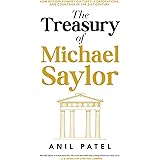Crypto vs Stock Market: Navigating Your Investment Journey
The decision between investing in cryptocurrency and the traditional stock market is a pivotal one for many aspiring and seasoned investors alike. As the video above concisely highlights, both avenues offer distinct opportunities for wealth growth, yet they diverge significantly in their underlying mechanisms, risk profiles, and regulatory frameworks. Understanding these fundamental differences is crucial for aligning your investment choices with your personal financial objectives and risk tolerance. This deep dive will expand upon the video’s initial overview, providing an intermediate-level examination of these two powerful investment landscapes.
Understanding the Fundamentals: What Exactly Are We Comparing?
Before making an informed decision, it’s essential to grasp the core nature of each investment vehicle. The video touches on their definitions, but a closer look reveals the intricacies that shape their behavior and potential returns. Both represent avenues for capital allocation, but their operational principles are vastly different, impacting everything from security to potential for growth.
1. The World of Cryptocurrency and Blockchain
Cryptocurrency, often simply called “crypto,” is a digital or virtual currency secured by cryptography, making it nearly impossible to counterfeit or double-spend. Unlike traditional currencies, crypto operates on a decentralized ledger technology called blockchain, as mentioned in the video. This technology distributes transaction records across a vast network of computers, ensuring transparency and immutability without central authority oversight. The market for cryptocurrencies has seen exponential growth, with its total market capitalization reaching into the trillions of dollars at its peak, though it remains significantly smaller than global stock markets.
Key attributes of cryptocurrencies include their decentralized nature, meaning no single government or financial institution controls them. This independence can be appealing but also means fewer consumer protections compared to regulated markets. The assets range from well-known digital currencies like Bitcoin (BTC) and Ethereum (ETH) to thousands of altcoins, stablecoins, and decentralized finance (DeFi) tokens. Each has its own unique use case and underlying technology, contributing to a diverse and rapidly evolving ecosystem.
2. The Traditional Stock Market Explained
The stock market, in contrast, represents ownership shares in publicly traded companies. When you buy a stock, you acquire a small piece of that company, known as equity. This entitles you to a share of its earnings and assets, and potentially voting rights on corporate matters. Investment options here are vast, including individual stocks of companies like Apple or Amazon, but also diversified instruments such as exchange-traded funds (ETFs) and mutual funds, which hold baskets of stocks and other assets. Historically, the stock market, as represented by indices like the S&P 500, has delivered average annual returns of around 10-12% over the long term, making it a powerful engine for wealth accumulation.
Investing in stocks means participating in established businesses with tangible products, services, and proven track records. Returns are typically generated through capital appreciation (when the stock price increases) and dividends (a portion of the company’s profits paid to shareholders). This market operates within well-defined regulatory frameworks, providing a layer of investor protection and transparency that has been developed over centuries. The stock market’s global capitalization far exceeds that of crypto, representing trillions of dollars in value.
Volatility and Risk: A Deeper Dive
The video briefly highlights the contrasting risk levels: “high risk” for crypto and “comparatively safer” for stocks. Expanding on this helps investors understand the implications for their portfolio and emotional well-being.
3. High-Stakes Potential of Digital Assets
Cryptocurrency is renowned for its extreme price volatility, a characteristic that draws both enthusiasts seeking rapid returns and skeptics wary of its unpredictable nature. It’s not uncommon for major cryptocurrencies like Bitcoin to experience price swings of 20-30% in a single day, and even more dramatic drops of 50% or more during bear markets. This high volatility is partly due to the market’s relative youth, smaller market capitalization compared to traditional assets, and speculative nature, where sentiment can drive prices dramatically up or down. For instance, in 2021, Bitcoin surged to nearly $69,000, only to plummet significantly in 2022, demonstrating its capacity for both rapid gains and substantial losses.
This inherent risk means that while crypto offers the potential for faster and larger returns, it also comes with a commensurate risk of significant capital loss. It appeals to investors with a high-risk tolerance who are comfortable with the possibility of substantial fluctuations in their portfolio value. The lack of a centralized “circuit breaker” or traditional market hours means that trading can occur 24/7, amplifying the effects of global news and sentiment. Understanding that your investment can halve in value quickly is a crucial aspect of engaging with this asset class.
4. The Regulated Stability of Equities
The stock market, while not immune to volatility, generally exhibits more stable growth patterns over the long term compared to cryptocurrencies. Price movements in the stock market are typically driven by company performance, economic indicators, geopolitical events, and investor sentiment. While market crashes and corrections do occur—such as the dot-com bubble burst or the 2008 financial crisis—the market has historically recovered and continued its upward trend. For example, the S&P 500 index has experienced average intra-year declines of about 14% since 1980, yet it ended positive in 32 out of 43 years, according to data from J.P. Morgan Asset Management.
This relative stability is partly attributed to the maturity of the stock market and the underlying value of the companies represented by the stocks. Investors can research company financials, leadership, and industry trends to make more informed decisions. Moreover, diverse investment options like index funds provide broad market exposure, significantly reducing the risk associated with individual stock picks. This environment is generally favored by investors seeking steady, long-term growth with a moderate to low-risk tolerance.
5. Regulatory Landscape and Investor Protection
A key difference highlighted by the video is the level of regulation. The stock market is heavily regulated, while cryptocurrency operates with far less oversight.
The stock market is overseen by governmental bodies and authorities, such as the Securities and Exchange Commission (SEC) in the United States, and financial regulatory authorities globally. These bodies enforce rules designed to protect investors, ensure fair trading practices, and promote transparency. For instance, publicly traded companies are required to file regular financial reports, which provides investors with standardized, verifiable information about their performance. Regulations also cover aspects like insider trading, market manipulation, and brokerage firm operations, creating a relatively secure environment for investors.
Conversely, the cryptocurrency market largely operates with significantly less regulation across most jurisdictions. While some countries are developing frameworks, a global, unified regulatory approach is still nascent. This lack of oversight means that investors in crypto may have fewer legal protections against fraud, market manipulation, or exchange failures. Initial coin offerings (ICOs) or new token launches, for example, often lack the stringent disclosure requirements of traditional stock offerings. While this decentralization is a core tenet of crypto, it means investors bear a higher burden of due diligence and risk assessment.
6. Investment Horizons: Short-term Gains vs. Long-term Growth
The choice between crypto and stocks often boils down to an investor’s time horizon and appetite for specific types of returns.
Cryptocurrency is often seen as an avenue for potential short-term, speculative gains due to its rapid price movements. Some investors attempt to profit from its high volatility through active trading strategies. However, given its nascent stage and potential for future widespread adoption, many also view certain cryptocurrencies as long-term investments, anticipating substantial growth over years or decades. It is important to remember that such projections come with a higher degree of uncertainty compared to established asset classes. The short history of crypto means there’s less historical data to predict long-term trends reliably.
The stock market is traditionally viewed as a vehicle for long-term wealth accumulation and retirement planning. Historically, equities have outperformed most other asset classes over extended periods, making them ideal for compounding returns over decades. Strategies like dollar-cost averaging into broad market index funds are popular for investors seeking steady, passive growth without needing to time the market. While short-term trading is also possible in stocks, the consistent, upward trend over long periods makes it a cornerstone for patient investors focused on enduring financial security. This approach minimizes the impact of short-term market fluctuations.
7. Diversification and Portfolio Strategy
A well-structured investment portfolio often includes a mix of assets to mitigate risk and optimize returns. The question isn’t always “crypto vs. stock market,” but “how much of each?”
For many, stocks form the bedrock of a diversified portfolio due to their historical performance and relative stability. Including a range of stocks from different industries, company sizes, and geographies can further enhance diversification. For example, a common recommendation is to hold a significant portion of a portfolio in broad market index funds. Adding cryptocurrencies, despite their higher risk, can provide additional diversification, especially if they are uncorrelated or have a low correlation with traditional assets. Some financial advisors suggest allocating a small percentage (e.g., 1-5%) of a speculative “play money” portion of a portfolio to crypto, acknowledging its high-risk, high-reward potential without jeopardizing core financial goals.
The concept of asset allocation is crucial here. Determining what percentage of your total investable capital to allocate to high-volatility assets like crypto versus more stable assets like stocks depends entirely on your individual risk tolerance, age, financial goals, and time horizon. A younger investor with a longer time horizon might be comfortable with a higher allocation to growth-oriented or even speculative assets, while someone nearing retirement would likely prioritize capital preservation and stable income. The global stock market’s consistent returns over decades mean it remains a primary component of diversified portfolios, while crypto represents an emerging, higher-risk, but potentially higher-reward alternative.
Making Your Choice: Aligning Investments with Financial Goals
Ultimately, as the video concludes, the “best” investment depends on you. Your financial journey is personal, requiring careful consideration of several factors before committing capital to either the crypto vs stock market. Reflect on your risk tolerance: are you comfortable with significant market swings for the potential of outsized gains, or do you prefer a more predictable, albeit slower, growth trajectory? What are your financial goals? Are you saving for a down payment in the next few years, or building a retirement nest egg for decades away? These objectives will heavily influence the suitable investment horizon.
Consider the role each asset class could play in your overall investment strategy. The stock market, with its regulatory oversight and long-term track record of growth, often serves as a foundational component for building substantial wealth. Meanwhile, cryptocurrency, with its innovative technology and potential for disruptive growth, can be a compelling, albeit speculative, addition for those comfortable with its inherent volatility. A balanced approach often involves a core portfolio of diversified traditional assets, with a smaller, carefully managed allocation to digital assets. Always remember that knowledge is your most powerful tool in the crypto vs stock market debate, so continuous learning and informed decision-making are paramount for navigating these complex financial landscapes successfully.







